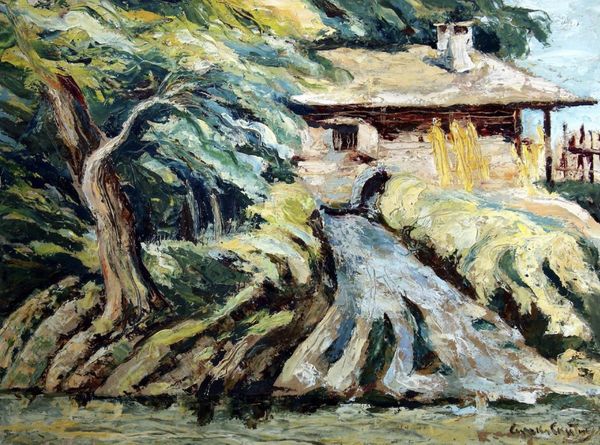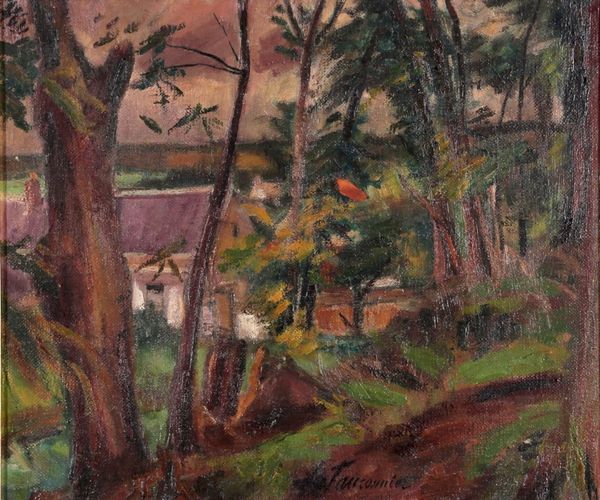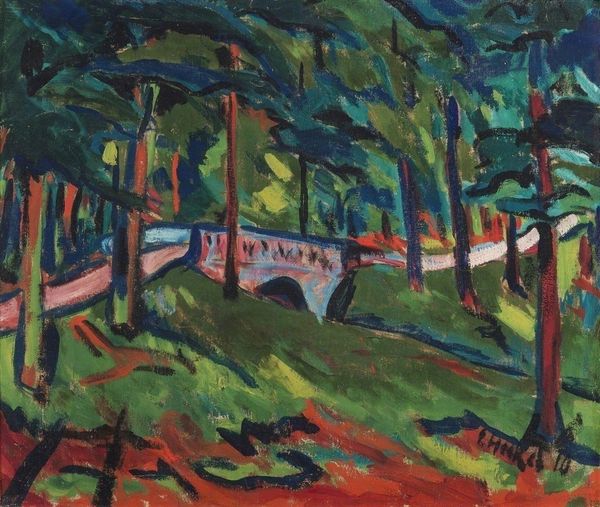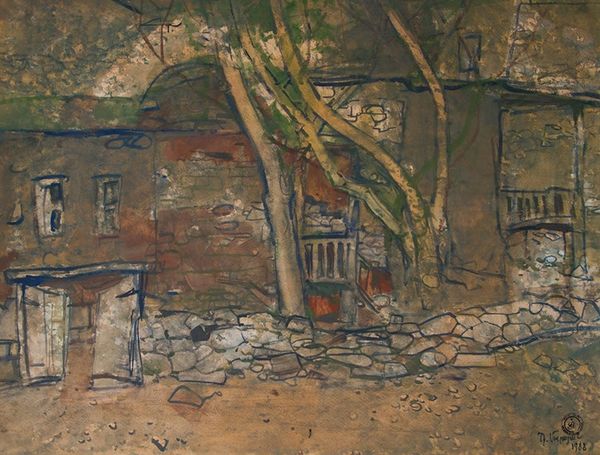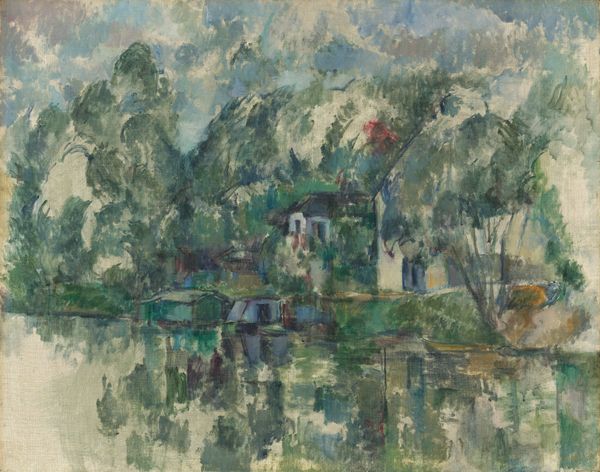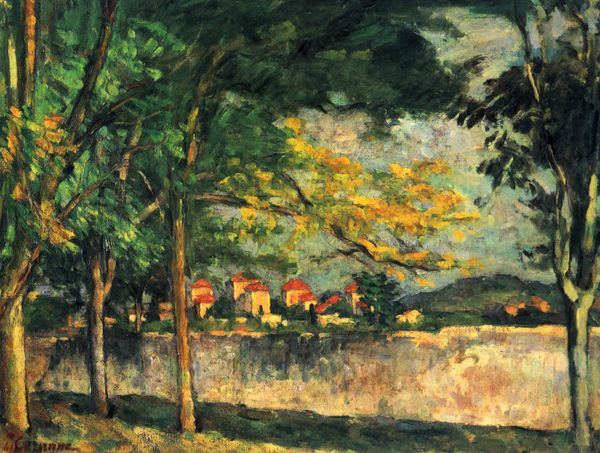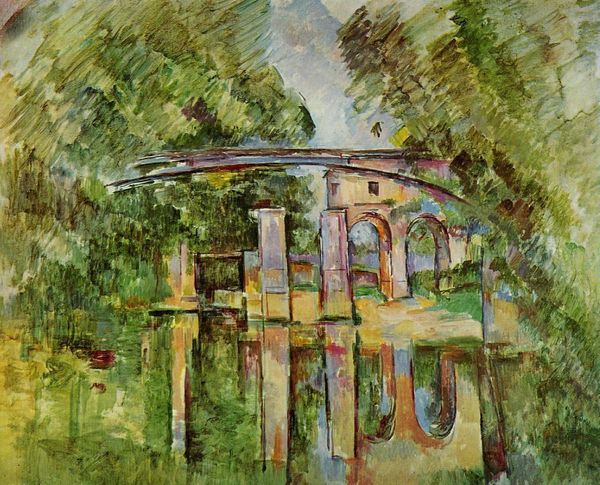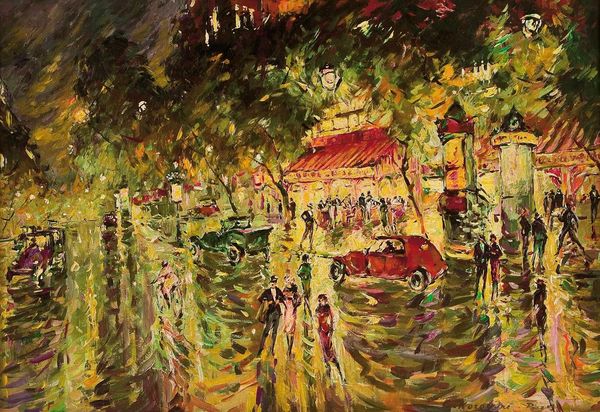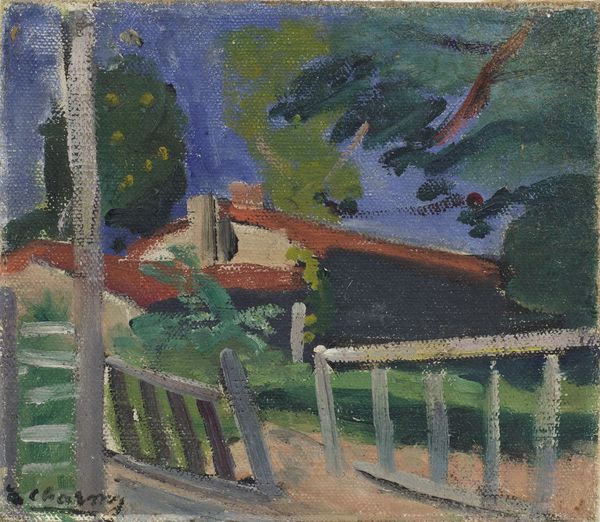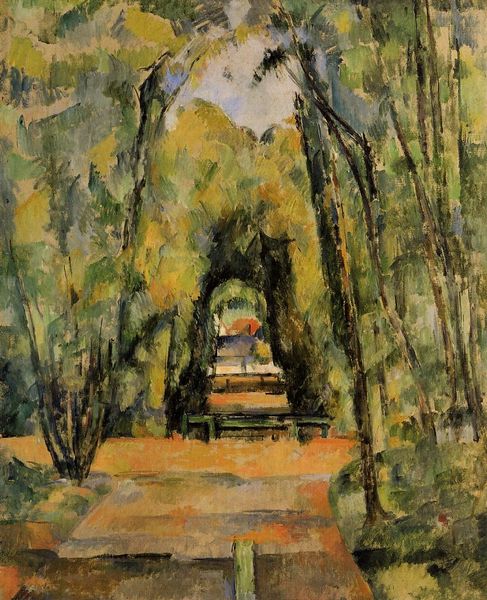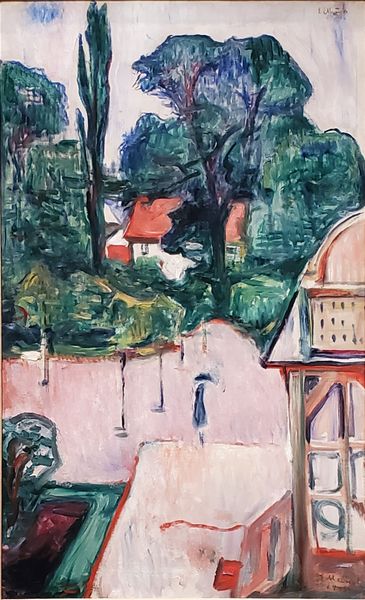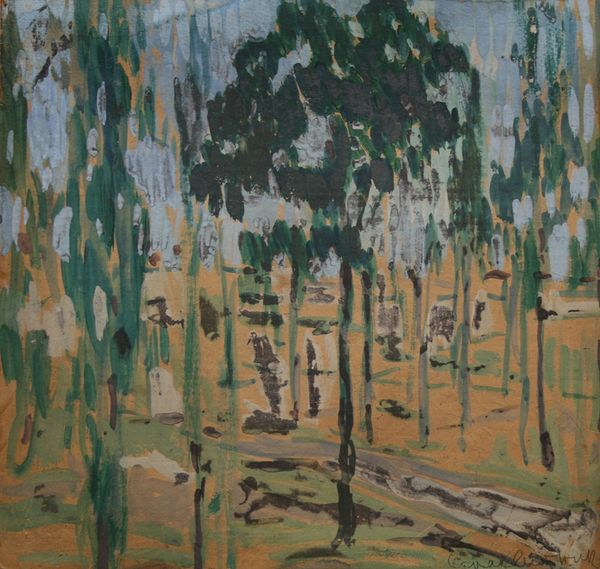
painting, oil-paint
#
painting
#
impressionism
#
oil-paint
#
landscape
#
oil painting
Dimensions: 58.5 x 72.5 cm
Copyright: Public domain
Editor: This is Paul Cézanne’s "The Bridge at Maincy," painted around 1879 with oil on canvas. It's surprisingly… shadowy. I thought Impressionism was all about light, but the muted greens and browns create a somber mood. What do you see in this piece? Curator: The bridge itself acts as a threshold, a place of crossing. Bridges have always symbolized transitions—from the mundane to the spiritual, from one state of being to another. Cézanne collapses depth; observe how the reflection of the bridge seems almost as substantial as the bridge itself. Where does reality begin and end? Editor: So, the reflections are important? I hadn’t considered that the doubled image carries meaning. Curator: The doubled imagery might imply a duality – perhaps Cézanne is speaking to the conscious and unconscious mind. What memories, what anxieties, does this location hold? Consider the time period: bridges are burgeoning alongside industrial infrastructure but stand nestled inside untouched forests. Editor: I see the tension now, the man-made versus nature. Like an early conflict of industrialization. Curator: Precisely. The solidity of the bridge juxtaposed with the fluid reflections also touches upon mortality versus the eternal flow of nature, common anxieties from the period. Notice too, the brushstrokes; broken, individual strokes that don’t quite resolve. What does this fracturing suggest to you? Editor: Disconnection, maybe? Not quite fitting in, like this new technology intruding on the old world. I will consider all of those tensions the next time I look at "The Bridge at Maincy." Thanks! Curator: A landscape reflecting the cultural anxieties of a swiftly changing world, subtly encoded in paint. Food for thought, indeed!
Comments
No comments
Be the first to comment and join the conversation on the ultimate creative platform.
